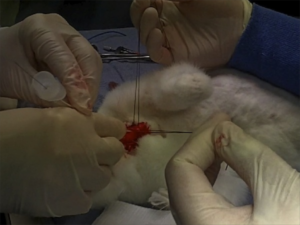![]() Notes from Day 1 of the London Trauma Conference
Notes from Day 1 of the London Trauma Conference
I’ve always fancied trying my hand at journalism so when this opportunity to cover the London Trauma Conference (LTC) presented itself how could I resist? The LTC is well established now running into its sixth year. So what little gems does it have left to offer?
The Air Ambulance Symposium opened the conference with strong representation from Norway.
Dr Marius Rehn presented a thought provoking talk on pre-hospital trauma triage. Pragmatically there will always be a proportion of patients that are mistriaged. So is under triage worse than over triage? It depends on whose point of view you take. If you’re the trauma victim then under triage is your greatest fear. But as clinicians we display loyalty bias (preferential consideration for our current patient over those we have no involvement with) which leads to over triage. The consequences are usually unseen as they manifest in other areas of the health system – studies have demonstrated a detrimental effect in cardiac patients arriving in units where a trauma patient is treated concurrently. Commonly under triaged are older patients that have low mechanism falls and children involved in RTC’s are over triaged. Triage protocols aren’t perfect but those based on physiology and anatomy are the best; even better still an experienced clinician (physicians better than paramedics) and in the future we should think about using lactate clearance.
I have never needed any convincing that ultrasound has a role in pre-hospital care. However Dr Nils Petter Oveland presented some of his research (due for publication next year) which reinforces this belief. He studied chest ultrasound for the detection of pneumothoraces. Plain radiography interpreted by a consultant radiologist can detect a 500ml pneumothorax; ultrasonography can detect a mere 50ml. Using pig models he demonstrated a linear relationship between the volume of the pneumothorax and the sternal – lung point distance (lung point = where the lung edge remains in contact with the pleura). Practically how can we use this? A small pneumothorax may be detected by ultrasound but have no clinical consequence. Prior to aero medical transfer the lung point can be marked and if clinical deterioration occurs en route repeat US can accurately determine an increase in pneumothorax volume and guide treatment. Genius!
 Prof Hans Morten Lossius provided a convincing argument for pre-hospital stroke thrombolysis. If you believe in this treatment, then it is more efficacious the sooner it is delivered (see photo). So why are we aiming for a thrombolysis time that is suboptimal? The thrombolysis times for a central Norwegian hospital were in the region of 3.5hrs, this reduced to 2.5hrs with rapid transportation. Approaching the problem from a different angle they trialled pre-hospital management with a mobile unit (CT scanner + neuroradiologist + neurologist) reducing time to thrombolysis to 72min (Lancet Neurology 2012, Walter). The next step is a multicentre RCT comparing standard treatment against a mobile CT + pre-hospital team with telemedical links to the Stroke centre……..
Prof Hans Morten Lossius provided a convincing argument for pre-hospital stroke thrombolysis. If you believe in this treatment, then it is more efficacious the sooner it is delivered (see photo). So why are we aiming for a thrombolysis time that is suboptimal? The thrombolysis times for a central Norwegian hospital were in the region of 3.5hrs, this reduced to 2.5hrs with rapid transportation. Approaching the problem from a different angle they trialled pre-hospital management with a mobile unit (CT scanner + neuroradiologist + neurologist) reducing time to thrombolysis to 72min (Lancet Neurology 2012, Walter). The next step is a multicentre RCT comparing standard treatment against a mobile CT + pre-hospital team with telemedical links to the Stroke centre……..
The Keynote address from Dr Gareth Davies took a look at the past and then a look to the future – the focus remained the same; providing the intervention patients need when they need it! Could this lead us into a future of Resuscitative Emergency Balloon Occlusion of the Aorta (REBOA) or Emergency Preservation Resuscitation (EPR) or emergency pre-hospital burr holes? Only time will tell.
Dr Steven Solid presented a double bill on patient safety. Admission to hospital is a high risk activity (as risky as bungee jumping!). Patient harm in aviation occurs 2 per 1000 flights. Only 25% were aviation related; mostly they are communication or equipment failures. He suggests medical line checks and team simulation training.
Dr Anne Weaver finished the first day with the story of her quest to get pre-hospital blood onto London HEMS to compliment the pre-hospital haemostatic resuscitation strategy they have for exsanguinating haemorrhage (tranexamic acid, prothrombin complex concentrate (for rapid warfarin reversal), POC INR machine, Buddy Lite™ blood warmers). Initial observations after the first six months are that ROSC is achieved more frequently in traumatic cardiac arrests although it’s too early to comment on mortality benefit. But this isn’t then end of the story – the next challenge is fresh frozen plasma.


